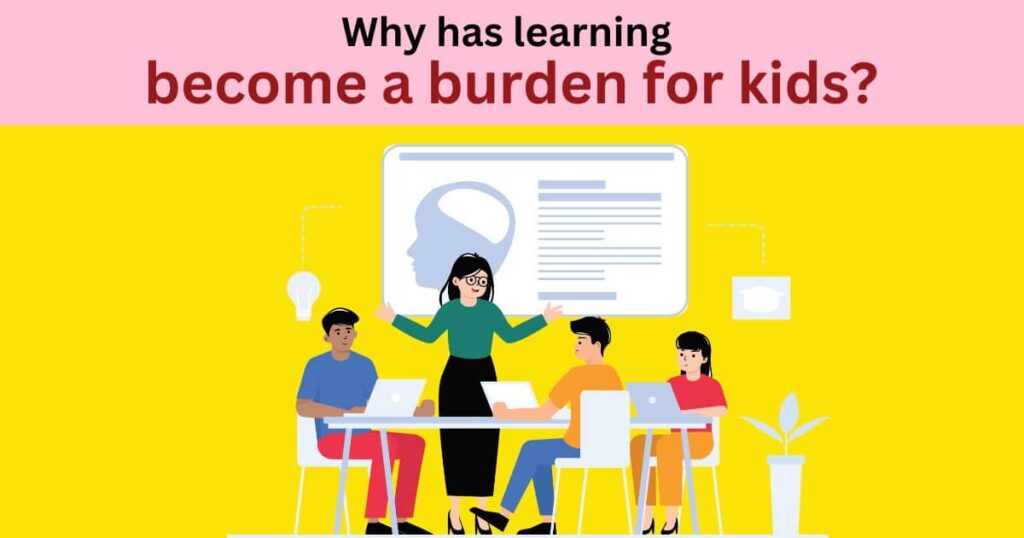How Learning Pods Can Transform Education in India

Understanding why learning feels like a burden to kids today is really important. If we know what’s causing our kids to feel this way, we can find ways to make learning enjoyable again. It’s not just about getting good grades; it’s about helping kids love learning and feel good about going to school. Going to school used to be tiring earlier as well, but why has it changed over the period of time? Why has it become more toxic? Why have kids started to hate school? According to a report by the World Economic Forum, the current education system was founded at a time when industries needed workers. Back then, workers needed a relatively fixed set of skills and knowledge to do well. In today’s era, this “fixed” mindset is losing its relevance. We are in an era where adaptability and innovative thinking are of most value. Kids today feel a lot of pressure from both parents and teachers to do well in school. Imagine being told over and over again that you have to get the best grades or be at the top of your class. This constant pressure can make kids feel really stressed out and worried about disappointing the adults in their lives. When we talk about the early 90s, kids didn’t feel this pressure. They felt satisfied if they got above 60% in the class. But now the education system has changed how parents, students and teachers think about education and grades. Schools can sometimes feel like a big competition. Kids often compare themselves to their classmates, and there’s a lot of focus on who gets the highest marks or who is the best in different subjects. This competitive atmosphere has made learning feel like a race rather than a fun journey. When the bar is set so high, kids start feeling overwhelmed. High expectations from parents, teachers, and even themselves can lead to a lot of stress and anxiety. They might worry about failing or not being good enough, which takes away the joy of learning and replaces it with fear and pressure. Let’s discuss the reason behind this. Loss of engagement and interest Another reason kids lose interest in school is because it can be really boring. Many schools still use old teaching methods like long lectures and reading from textbooks. Imagine sitting through that without much interaction or fun activities. It’s no wonder kids feel disconnected from what they’re learning. On the other hand, social media, YouTube, and other online content are super engaging and exciting. They grab kids’ attention easily with videos, games, and interactive content. Kids are used to these fun and fast-paced experiences online, so traditional classroom methods just can’t compete. When learning feels like a chore, it’s hard for kids to stay motivated. They need more hands-on activities, group work, and interactive lessons to keep them interested. Schools need to step up and make learning as engaging as the content kids love online. This way, education can be more fun and effective, helping kids stay connected and excited about what they’re learning. Rote Learning vs. Creative Learning Rote learning, where kids just memorise facts without really understanding them, is another problem. It’s like cramming for a test, vomiting everything during the test and then forgetting everything right after. On the other hand, creative learning, which involves exploring ideas, asking questions, and solving problems, is much more engaging. When kids get to be creative, they’re more likely to enjoy learning and remember what they’ve learned. Sometimes, what kids learn in school doesn’t seem to relate to the real world. They might wonder, “When will I ever use this in real life?” If the curriculum doesn’t show how subjects like maths, science, or history apply to everyday life, kids can feel like what they’re learning is pointless. Making connections between school lessons and real-world applications can help spark their interest and make learning more meaningful. School curriculum with added pressure of competitions: Imagine coming home from a long day at school only to face a huge pile of homework. For many kids, this is a daily reality. When there’s too much homework, it can feel overwhelming and exhausting. Instead of having time to relax and recharge, kids are stuck doing schoolwork all evening. While homework alone might not be too much, the real problem starts when you add in competitive exams and coaching classes. Many kids attend extra coaching sessions after school, and these come with their own set of homework and pressure. So, it’s not just school and homework anymore—it’s school, homework, coaching classes, and the homework from those coaching classes. This combination can be incredibly toxic and overwhelming. With so much on their plates, kids often have very little time left for rest or fun activities. Things like sports, hobbies, or just playing with friends are important for a balanced life, but when the curriculum is overloaded with extra coaching, these activities get pushed aside. This lack of downtime can make kids feel burnt out and less excited about learning. All this stress and lack of free time can really take a toll on kids’ health. Physically, they might not get enough exercise or sleep, which are crucial for growing bodies. Mentally, the constant pressure and lack of relaxation can lead to anxiety, depression, and other issues. It’s important for kids to have a balanced lifestyle where they can enjoy learning without it harming their health. Can learning be made interesting in any way? Definitely, every problem has a solution. One way to make learning less of a burden is to focus on holistic education. This means looking at the child as a whole, not just their academic performance. Schools can emphasize the importance of social skills, emotional well-being, and physical health alongside traditional subjects. When kids feel cared for in all aspects of their lives, they are more likely to enjoy learning and do well. Using Technology to bridge the gap: Technology can be a great tool
